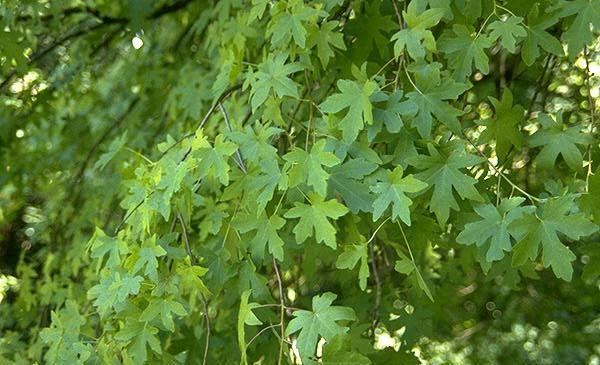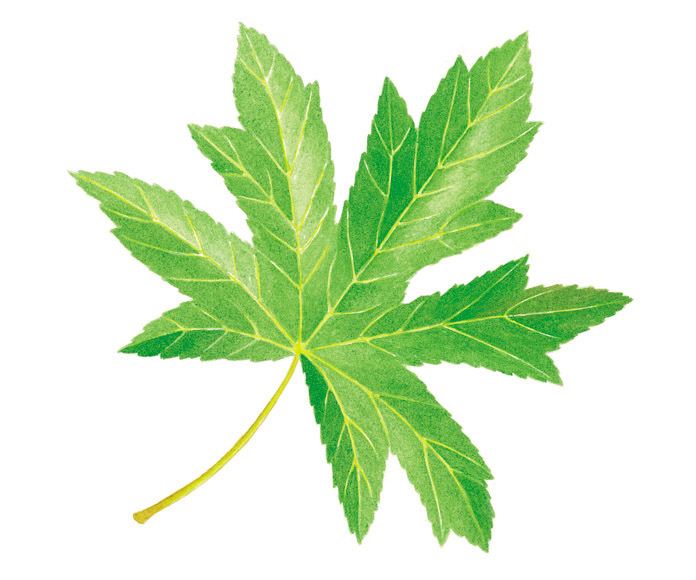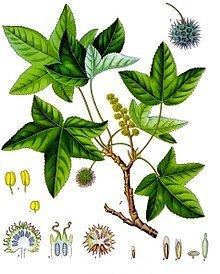Rank Species | Higher classification Sweetgum | |
 | ||
Similar Sweetgum, Altingiaceae, American sweetgum, Styrax, Hamamelidaceae | ||
Liquidambar orientalis
Liquidambar orientalis, commonly known as oriental sweetgum or Turkish sweetgum, is a deciduous tree in the genus Liquidambar, native to the eastern Mediterranean region, that occurs as pure stands mainly in the floodplains of southwestern Turkey and on the Greek island of Rhodes.
Contents

Description

Oriental sweet gum is a deciduous tree, 30–35 m (98–115 ft) in height with a trunk of 100 cm (39 in) in diameter. The unisexual flowers bloom from March to April. The fruits ripen in November to December and the seeds are wind dispersed. The tree is very attractive and especially valued for its colourful autumn leafs. Oriental sweet gum trees favour an elevation of between 0–400 m (0–1,312 ft), a mean annual rainfall of 1,000–1,200 mm (39–47 in) and a mean annual temperature of 18 °C (64 °F). The tree's optimal growth is on rich, deep and moist soils such as bogs, river banks and coastal areas but it is also able to grow on slopes and dry soil.
Biotope

The forests of this Tertiary relict endemic taxon are found notably within a specially protected area between Dalyan and Köyceğiz in Muğla Province, where a 286 ha (710 acres) zone is set aside as a nature reserve and arboretum for the preservation of the species. A large stand also surrounds Marmaris. These two areas are the better known oriental sweetgum forests due to their respective regions also being prominent centers of tourism, although a big population covering nearly 100 ha (250 acres) is also found in an inland region within Aydın Province extending between Çine, Köşk and Umurlu districts. Yet another sweetgum forest area of 88.5 ha (219 acres) under protection is situated in Burdur's depending district of Bucak alongside Karacaören dam reservoir on the road to Antalya. The trees are also found locally in Denizli's depending districts of Beyağaç and Tavas. The total area of pure sweetgum forests in Turkey covers 1,348 ha (3,330 acres), all in the southwestern regions of the country. The present-day extension corresponds to a marked decrease since the 1940s level of 6,000–7,000 ha (15,000–17,000 acres), although the protective measures and infrastructure in place since the 1980s helped stop loss of stands and led to slight improvements.
Etymology
The name in Turkish for the particular species is Günlük ağacı, while the trees of the genus as a whole are called Sığala ağacı, a name also used in sole reference to oriental sweeetgum itself. Günlük ağacı means "a frankincense/myrrh tree [ağaç]" in which the first element is of unknown origin, whereas sığala refers to "a boggy place".
Production and uses
The extraction of its sap and the production of an oil based thereof (sığala yağı), as well as exports of these products, play an important role in the local economies of Grece and Turkey. The harvest of the sap and the preparation of the oil involve quite strenuous tasks lasting from May to November and consisting of several separate phases. The thick sap is obtained in the period June to September by gradually stripping ¼ of the total trunk lengthwise. Wounding the trunk causes sap to emerge, which can be further stimulated by tapping the trunk. In the village of Kavakarası near Köyceğiz in the Turkish province of Muğla, locals scrape the sap from the wounded tree trunks using the sharp edge of plastic bottles. The stripped sap is put in boiling water to soften, then pressed. The styrax is then diluted with ¼ water, keeping it soft and preserving its aroma. By steam distillation a light yellow oil is obtained. There is a danger for the present generation of master oil makers not being replaced in near future.
In English, this oil is known under several names, shortly as Storax to include all sweetgum oils, or as Styrax Levant, Asiatic Storax, Balsam Storax, Liquid Storax, Oriental Sweetgum Oil, or Turkish Sweetgum Oil. Diluted with a suitable carrier oil, it is used externally in traditional medicine. It is a different product from the benzoin resin produced from tropical trees in the genus Styrax.
The hydrocarbon styrene is named for Levant styrax from Liquidambar orientalis, from which it was first isolated, and not for the genus Styrax itself; industrially produced styrene is now used to produce polystyrene plastics, including Styrofoam.
Prospects
The status of and developments regarding the protection of Turkish sweetgum continues to occupy local and national environmental agenda at a critical level in Turkey. Among the main causes for the loss of sweetgum forests was the cutting and felling of trees for opening new fields for agriculture, as well as the construction of three separate dams at localities which precisely corresponded to important habitats for the species. As such, Liquidambar orientalis holds an important position in Turkey's biodiversity and among endemic species, is one of its best-known symbols.
